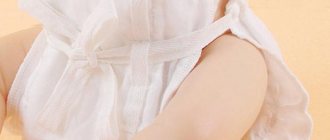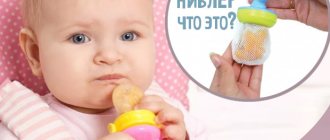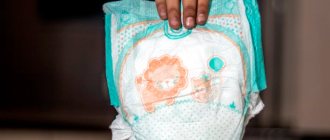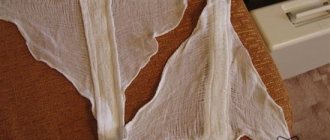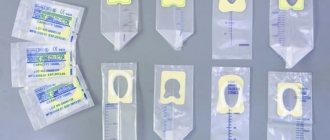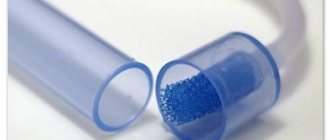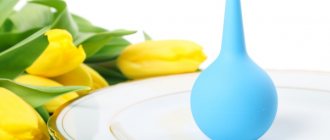What are reusable diapers?
Reusable diapers for newborns in the broadest sense are diapers that can be used more than once , but several times. A reusable diaper is a kind of “waterproof cloth” that keeps your baby’s clothes clean.
Today there are several types of reusable diapers:
- Diapers with an internal pocket for a replaceable insert . The advantage of such diapers is that the outer layer is made of a material that perfectly allows moisture to pass through without leaving it on the surface. The inserts for such diapers are made of a material that perfectly accumulates moisture.
- Diapers without a pocket . These diapers contain 8 layers that absorb moisture. You can wear these diapers when visiting or going for a walk.
- The third group of reusable diapers consists of waterproof pants and inserts for them. Only the liners can be washed. We wash the pants themselves only when they are heavily soiled. These diapers are suitable for overnight sleep. For an active baby, such diapers may restrict movement.
- A separate group of reusable diapers includes panty diapers for potty training a child.
How to wash?
It all depends on the wishes of the parents. You can do it manually, the old fashioned way, but most mothers choose a washing machine.
All the “dirty” work comes down to washing off the stool with water in time and putting the inserts, maybe even panties, into the machine.
Washing mode – delicate or baby clothes. The best temperature regime is from 40 to 60 degrees.
After drying the “linen”, the removable parts must be carefully ironed.
Review of manufacturers and prices
There is no clear answer to the question of which reusable diaper to choose. It all depends on your budget and the physiological characteristics of your child.
To begin with, we recommend that you decide on the type of diapers that you would like to purchase.
Among the variety of products in this group offered on the market, we recommend several:
- A reusable BAMBOOLA with an insert will cost at least 510 rubles; there are several diapers from this manufacturer to choose from.
- Multi Diapers original panties-diapers cost around 240 rubles for 1 piece, they will require inserts. A set of 4 additional inserts for reusable diapers will cost 250 rubles.
- Reusable diapers Gloryes are very popular among Russian mothers. Their cost is about 550 rubles per piece + a set of inserts for them.
- You can purchase diapers individually or as a set. One such diaper will cost 235 rubles, a set from 3330 rubles.
- Waterproof diapers cost from 415 rubles, and you will need an insert for it from 185 rubles.
- If you order diapers from China, you can save a lot.
Watch a video review of reusable diapers from China:
Thus, the price of reusable diaper panties greatly depends on the manufacturer, as well as on the store itself. In any case, you can save money on the Internet.
Advantages and disadvantages
Knowing the positive and negative properties will help you decide in favor of one type of absorbent product or another. You cannot completely sacrifice your interests and the opportunity to rest for an extra minute, but it is important to remember about the health of the baby. Mommy must understand that when choosing a product, it is necessary to take into account the safety and environmental friendliness of the product.
Find out how to choose orthopedic shoes for children with hallux valgus.
Read about the use and price of Efferalgan children's syrup for fever in this article.
Advantages:
- reusable diapers and absorbent inserts are made from natural fabrics: allergies, dermatitis, and diaper rash occur less frequently;
- lower cost. The average price of products is from 220 to 500 rubles, the cost of absorbent liners is about 100 rubles per piece (wholesale is even cheaper). It is enough to buy 4-5 panties and 25 inserts (up to a year), 10 inserts (after a year). The cost of the kit is several times lower than the cost of all diapers. Often up to one and a half thousand dollars are spent on disposable diapers over a couple of years. The desire to save money and changing diapers less frequently provokes dermatological diseases in children;
- environmental friendliness. Reusable products retain their functional properties and appearance for two to three years. There is no mountain of diapers polluting the world around us;
- ease of use. Velcro and snaps make it easy to adjust the size of reusable products. A model purchased at 2 months can be used for up to a year or more;
- the child feels urination and defecation. With this approach, it is easier to potty train your baby. A child is always “dry” in diapers. It is difficult for a toddler to understand what exactly needs to be done on the potty if he has never felt discomfort from wet panties or rompers.
Flaws:
- there is no ideal dry skin, as when using diapers;
- after each urination you have to change the absorbent liner, every 2-3 hours you have to change the diaper itself for washing;
- when defecating, it is important to immediately replace the kit;
- the mother has to often check whether the baby is dry;
- Sometimes it is difficult to remove feces from the absorbent surface.
How to use reusable diapers?
Reusable diapers are very easy to use. If you have panties with replaceable inserts, put the insert in your pocket and put the diaper on your baby. Use the buttons to adjust the width of the panties.
There is no need to change the diaper itself when it gets dirty; just change the insert. Usually it takes 1-2 hours from shift to shift, everything here is strictly individual.
Some tips to keep your diaper in good shape:
- Before the first use, the diaper must be washed, do not forget to first unfasten the buttons;
- Panties can be washed at a temperature no higher than 60 degrees ; for liners, a temperature of 90 degrees is permissible.
- Use detergents for washing baby clothes when washing;
- Do not leave dirty diapers and inserts for a long time; store a dirty diaper for no more than 12 hours from the moment of contamination;
- Do not dry the diaper on a heated towel rail, this will ruin both its appearance and functionality;
- Neither the liner nor the panties should be ironed!
Helpful tips for those who decide to use reusable diapers:
- In order not to make a mistake in choosing a reusable diaper, buy 1 piece “to try”. different manufacturers. This will allow you to choose the most comfortable and convenient diaper for your baby. Will save money.
- The best reusable diaper is not a specific brand, but the one that is ideal for your baby.
- Have at least 10 diapers , and preferably enough to last for 1 day. This will significantly reduce the number of washes and the cost of detergents.
- Choose a diaper based on your baby's weight. An incorrectly fitted diaper will leak and cause discomfort to the baby.
- Make sure that the insert in the diaper is distributed evenly and does not curl or curl.
- Don't worry if your new diaper doesn't retain moisture well enough. Typically, its effectiveness improves after several washes.
What it is?
One of the best and most practical inventions of mankind can be more economical for the family budget. From now on there is no need to throw your used diaper in the trash.
What does a reusable diaper consist of?
A worthy replacement for gauze and all kinds of fabrics that have become a thing of the past, the appearance is very similar to children's underpants, which for ease of use are fastened with buttons or Velcro (to adjust to the required size). The models are released in a fairly positive and “rosy” mood.
Bright and cheerful shades do not leave either parents or children indifferent.
Attractive design is not the only advantage when choosing reusable diapers. The set for children consists of panties with a special pocket for a replaceable insert (such as a diaper) and have sufficient protection against leakage: The following three layers are distinguished:
- external, retaining moisture. Has increased breathability (the baby’s skin breathes);
- medium, which is a special replaceable liner. Perfectly holds liquid in any volume (it is inserted into a diaper, while the baby will feel the moisture, or into an internal pocket located under the waterproof layer);
- internal, made from soft and lightweight materials. It always remains dry, does not injure the baby’s skin and quickly absorbs moisture.
Reusable diapers are complemented by an elastic band (latex-free) on the waist, high-quality double-sided fasteners adjusting in height and width, special inserts that prevent leakage, and pads for fixing the valve.
Outer waterproof material – polyester. Regardless of the location, absolutely all parts of the diaper (internal and external) have a very attractive design.
Manufacturers advise using reusable diapers for a maximum of 3 years.
We sew a diaper with our own hands
For those who are short on funds and have extra time, we recommend sewing a reusable diaper with your own hands.
First we'll make a pattern. To do this, you can take an ordinary disposable “diaper”. We trace it with a pencil on paper. We transfer the resulting “pattern” to the fabric, leaving one centimeter for an allowance. We attach an elastic band to the edges of the product, from the back and legs. Next, sew on the Velcro or ties. Separately, we prepare the diaper inserts from gauze.
Watch the master class on how to sew a diaper with your own hands:
Thus, a reusable diaper can become a replacement for the so popular “diapers”. Having a little extra time in the day and wanting to save money in the family budget, you can use it sometimes or completely switch to a reusable diaper.
Each family independently determines which reusable baby diaper is best to purchase, because a product of one brand may not be suitable, while another will fit perfectly on the baby’s bottom.
Care instructions
General recommendations for caring for reusable diapers.
- Before first use, reusable diapers and inserts must be washed. In this case, you need to separate the charcoal bamboo diapers and inserts from the white inserts and diapers with a white layer inside, and wash them separately. During the first washes, the charcoal bamboo liners fade a little. Then you can safely wash them together, as well as with other clothes.
- Optimal absorbency of the liners is achieved after 3-4 washes. Until this time, leaks are possible due to reduced absorbency and increased humidity in the diaper. In this connection, redness on the skin is possible (but not required). After several washes this problem disappears.
- The manufacturer recommends washing diapers at a temperature no higher than 40 degrees so as not to damage the membrane layer (the membrane may peel off from the fabric). The liners can be washed at any temperature , since they do not have a membrane layer. From time to time, it is even useful to wash the liners at high temperatures (and with oxygen stain remover) to ensure hygienic care. Information from the manufacturers of charcoal-bamboo fiber and microfleece: “You don’t have to worry about the growth of bacteria as a result of washing at low temperatures: unlike cotton, which must be washed at high temperatures to avoid the growth of bacteria, artificial fabrics (microfleece, microsuede) do not allow bacteria multiply in their fibers; bamboo charcoal fiber has natural antimicrobial properties and does not need to be washed at high temperatures and treated with chemicals (according to tests and tests carried out by the global organization SGS, observing different fibers under a microscope, provided the same number of bacteria, it can be seen that cotton fibers contribute to the proliferation of a huge number bacteria, and approximately 95% of bacteria that get on bamboo charcoal fiber die within 24 hours).” We would add that there is no need to worry too much about bacteria on cotton either. Our grandmothers and mothers raised us in diapers and did not boil them every time after use. The chemicals in disposable diapers cause much more harm.
- Do not wash diapers and inserts with soap and powders containing soap , as soap lathers the fabric with natural fat, as a result of which moisture does not penetrate into the insert and the diaper begins to leak. Liquid soap, liquid products (without caring additives), suitable for washing and washing diapers. If your diapers and inserts are dirty, you can fix this by using the instructions at the end of this article.
- You cannot wash diapers with products that contain glycerin ; it also interferes with the passage of moisture into the absorbent layer.
- It is better to wash diapers and inserts in the washing machine than by hand. They do not fade, so you can wash them along with other things. Solid dirt must first be shaken into the toilet, it is convenient to use a hygienic shower (you can use a plastic spatula), and wash the diaper and liner under the tap (you can wash it with just water, or any liquid soap or detergent). The inserts also need to be rinsed under the tap with plain water, washing off the urine from them (if you leave them as is while waiting for washing, the urine combines with oxygen and an odor appears). And then wash it at any convenient time. To prevent urine from combining with oxygen and emitting a pungent odor, it is necessary to limit the access of oxygen. To do this, it is better to store diapers while waiting for washing in a closed container (membrane bag). You can store it in a bucket with a lid, but the membrane bag does not let in the smell, but still breathes. Many people do not wash the urine off the inserts first, but before washing they put the inserts and diapers on the rinse cycle to wash out the urine, and then on the wash cycle. You can do this.
- You cannot dry reusable diapers on a radiator - the membrane layer may peel off. The earbuds can be dried on a radiator, but according to reviews, hot drying makes them absorb worse. If you wash them in the evening, the diapers and inserts will usually dry at room temperature overnight. Liners (especially charcoal bamboo liners) may appear dry on the outside, but there may still be moisture inside. More often they are completely dry by lunchtime (if washed in the evening).
- Can be pressed at high speeds. Diapers and inserts dry faster after spinning in the washing machine than after washing by hand. You cannot dry it in a machine at high temperatures, only if there is a gentle low-temperature drying mode.
- You can't iron diapers (because of the membrane)! Natural liners (bamboo and charcoal bamboo) are possible. There are no microfiber inserts (they are synthetic). But let us add that they do not need ironing. If desired, you can treat with steam from the iron.
- Do not use rinses, conditioners or powders with a conditioning effect. They leave a residue on the fabric, thereby also reducing absorbency. If you use softeners to wash other clothes, the remaining softener may settle on the machine parts and also end up on diapers. To soften water, you can effectively use vinegar or install a magnetic or polyphosphate filter on your machine.
- It is not advisable to constantly use powders and cream under the diaper , this also disrupts the absorbency of the inserts. If you need to use greasy ointments or use candles, you can use special diaper wipes. Or, for this purpose, use wet wipes that have been previously washed from impregnation and dried.
- Do not use chlorine bleach. Oxygen-based bleach is allowed (it's even a good idea to add it to your laundry every now and then).
Caring for potty training panties and diapers.
Caring for absorbent diapers is exactly the same as caring for diapers, since absorbent diapers are made from the same materials. Waterproof and absorbent cotton diapers have a membrane layer, so washing up to 40 degrees is also recommended, hot drying and ironing are prohibited. The potty training panties also have a waterproof layer, and cotton is susceptible to high temperatures, so care is also gentle - wash at 40 degrees. In order to remove stains, it is convenient to soak in an oxygen stain remover solution. Do not dry hot.
Attention: do not store wet cotton panties in a closed container (a bucket with a lid or a tightly closed bag) while waiting to be washed. The fabric fades and deteriorates. These panties will quickly become unusable! They must be stored either in an open container or in a membrane bag. Washing your panties in a mesh laundry bag will also extend their life! Here is a discussion in the VK group about what happened to panties during long-term storage in a closed container.
What products can be used to wash reusable diapers.
When choosing a product, read its composition. If it does not contain soap (or its content is at least less than 5%), it is suitable for washing diapers. Animal fat from soap leaves a residue on the liners and they begin to absorb poorly. Also check the composition of the product for the presence of glycerin - its effect is the same as that of soap.
If the soap contains vegetable fats or oils, it is better than animal soap. If the soap content is less than 5%, then this usually does not have a significant effect on absorption. You can wash with the simplest liquid soap, since liquid soap is usually a mixture of chemicals, and not natural soap. But liquid laundry soap is not allowed. If liquid soap contains conditioning and softening additives, then this is also prohibited.
It is best to wash diapers with liquid products. HERE read a review of products that have proven themselves to be the best for washing diapers.
Recommendation for safe washing of any items: choose products without phosphates and with a minimum content of surfactants (anionic surfactants) - they are harmful to humans (they are poorly rinsed, accumulate in the fabrics of clothing, having a constant effect on the body). These substances return to us through tap water, because... Moreover, these substances are cheap and effective, so most people like the price and quality of washing with surfactants and phosphates, but they do not know about their harm. They are used in powders that are cheap in composition. Phosphates are already prohibited in European countries, but here they are found everywhere (for example, in “Eared Nanny” there are the most of them. Discussion of allergies to “Eared Nanny”). Harmful substances, deposited in tissues, can cause irritation on delicate and sensitive skin (especially in a humid environment) - while many may believe that the irritation occurred from wearing reusable diapers. And irritation in disposable diapers is caused by the influence of chemical additives in the diaper, which turn the liquid into a gel - they are activated after peeing and begin to affect the mucous membrane. Therefore, pediatricians recommend changing a disposable diaper immediately after peeing, and not keeping the child in it until it is completely full. If the integrity of a disposable diaper is damaged, the gel that gets on the skin causes severe chemical burns. Also, these same substances are contained in feminine sanitary pads, causing many, in addition to discomfort, some problems in this area, which are usually not associated with wearing pads (since no one talks about it). After replacing disposable pads with reusable options, cycle problems usually go away.
Read the composition of the products. It is advisable to choose products with nonionic surfactants (NSAS) instead of surfactants - they are biodegradable, or at least with a minimum content of surfactants (<5%)! It is also advisable to do so without optical brighteners; they also settle in fabrics, creating the illusion of whiteness.
All detergents work best in soft water. If you soften the water by adding vinegar or citric acid, this will increase the effectiveness of any laundry detergent.
If you have very hard water, this may affect the absorbency of your diapers. To make the washing water softer, it is recommended to add soda to the wash (1 tablespoon per 6 liters of water), table or sea salt, lemon juice (1 tablespoon per 6 liters of water), vinegar (about 1 tablespoon per 2 liters of water) or citric acid. The proportions are approximate and depend on the degree of water hardness. Washing diapers in hard water with soap nuts has gotten good reviews. It is useful to add an oxygen stain remover to your wash. Greenly laundry detergent is also positioned for washing in hard water (neutralizes hardness salts). Also, if your diapers often have poor absorbency due to hard water, prevention is more often required (described below). Useful discussions in the VK group on hard water: here and here (mothers write how they solved the problem).
Based on the experience of washing reusable diapers with different means, gels containing surfactants are still most effective. Based on the reviews, we settled on products containing no more than 5% surfactants. And not very harmful, and absorption is maintained at the proper level. On this page you will find a list of laundry detergents that have received the best reviews: REVIEW OF WASHING DETERGENTS FOR REUSABLE DIAPERS.
Important: If the powder says “0+” or “children’s”, this only means that it contains no fragrances. As for the rest, such a product may differ little from an adult one or even be even more toxic in composition, so that all difficult stains are washed off. Therefore, we read the ingredients carefully, know the harmful substances by sight and choose wisely. And in this case, it doesn’t matter whether the product says “0+” or not. And not all eco-friendly products necessarily wash well; this also depends on the composition. If there are difficult stains on clothes, you can pre-wash them, or add safe oxygen-based stain removers to the wash (for example, sodium percarbonate, persalt) and your clothes will be clean and safe! Light stains should not be washed with aggressive powders.
Storage before washing:
- If there are solid contaminants, shake them into the toilet, you can use a hygienic shower, a brush, a spatula, and wash the stain.
- To avoid diaper odors, it is recommended that you rinse the inserts under the tap before putting them away to wait for washing.
- It is convenient to use a waterproof bag to store used diapers before washing, or a bucket with a lid. This helps prevent bathroom odors when diapers are stored outdoors (urine combines with oxygen to release odor). If stored in a bag or closed container, such a reaction will not occur. This is especially true if you don't rinse your liners before putting them in the wash. In this case, it is convenient to run diapers and inserts in the rinse mode before washing (the effect will be better if you add vinegar) to wash away the urine. Instead of pre-rinsing, you can run a short wash cycle (without detergent), because... The washing temperature is higher than the rinsing temperature.
- Many people use the option of storing them in a bowl of water before washing. This method is undesirable, as they may fade during long-term storage (especially if you add laundry detergent). You can do this if you plan to do the laundry on the same day. And before putting them in a bowl of water, the inserts must first be rinsed under the tap (so that they do not get soaked in urine). It is useful to add vinegar, soda, or citric acid to the water.
Based on your personal experience, you can choose the most convenient way for you to store diapers before washing.
If there is an odor from diapers:
It happens that clean diapers do not smell, and after one pee a strong smell of urine appears. This means that the earbuds have accumulated odor.
Causes:
- systematic long-term storage of diapers before washing in the open air without pre-rinsing, when the odor released by reaction with oxygen is absorbed into the fibers of the fabric;
- wash on a short cycle (less than 1 hour), hand wash;
- the chosen detergent (if it contains soap);
What to do:
- carry out preventive care (described below) . This type of care is recommended to be done from time to time - it has a beneficial effect on the absorbency of diapers, additionally cleans them and prevents the appearance of odors.
- It is better not to wash diapers and inserts in a quick wash - this will quickly accumulate odor and require preventive care. It is recommended to wash on long cycles – more than 1 hour. Typically, diapers are washed with other clothes. If desired, you can wash the diapers with clothes and the inserts separately at high temperatures.
- review the way diapers are stored before washing so that they come into contact with oxygen as little as possible. A waterproof diaper storage bag or bucket with a lid works well for this. This way there will be no strong smell either in the bathroom or from diapers while wearing them.
Also in this thread “Ways to prevent and get rid of odors. Practical experience and useful tips” you can read advice from mothers on this topic or write your own.
How to restore absorbency to inserts and diapers after washing with soap
Here are answers from moms about storing reusable diapers before washing.
Members of our VK group share life hacks for eliminating odors and storing diapers before washing.
If the diapers become poorly absorbent, leak, or get wet on the outside:
- Diapers begin to absorb optimally after several washes. Until this point, absorption may be unsatisfactory.
- If absorption is impaired during prolonged use, there may be several reasons: The laundry detergent contains soap (especially if it is a powder, it contains solid animal soap powder). Animal soap clogs fabric fibers and prevents moisture from passing into the absorbent layer. If it is a liquid soap, it usually does not affect absorption because liquid soap is usually called a mixture of chemicals.
- The laundry detergent contains glycerin - it settles on the fabric and also disrupts the passage of moisture into the absorbent layer, even more than soap.
- Using air conditioning. The effect is similar to soap. If you only add conditioner to other laundry items (not diapers), it can still settle on the drum and machine parts, and end up on diapers when you wash them. In this case, you need to carry out preventative cleaning of the car and not use the air conditioner. To obtain the desired effect, you can use natural products and aromatic oils.
- Use of skin care products: oils and powders. Usually, when using reusable diapers, this need disappears, but if you really need it, you can put a napkin (for example, wash and dry a wet napkin) so as not to stain the diaper.
- Very hard water. Can make fabric fibers coarser and absorbency worse. You can solve the issue by installing a magnetic filter to soften washing water (sold in hardware stores and installed on your washing machine), as well as by adding natural softeners, such as vinegar or soda, to the water.
- Drying the earbuds on the battery - this makes them harder and absorbs somewhat worse.
- The diaper is too full and there is nowhere else for it to absorb, then the moisture begins to seep out and be absorbed into the outer fabric.
- Boys pee higher, and if they sleep on their stomach for a long time, the diaper can leak down the tummy. Solution: choose a reusable diaper model with a tummy strap (all Elite models).
- Solution: study the composition of the laundry detergent for the presence of soap, glycerin, and caring additives. Test the text for absorption (description below). If impaired absorption is confirmed, carry out preventive care. It is the same as when there is an odor from diapers (description below) . Change the detergent or rule out other causes (for example, soften the water).
How to test for impaired absorption: pour warm water (like a child’s urine) from a glass and see how it is absorbed. If it sits in balls and is not absorbed or is absorbed reluctantly, then you need to carry out preventive care to eliminate soapiness.
Preventative care for odor and to improve absorption:
- Rinse the inserts and diapers (or run a rinse in the machine) to wash away the urine, then soak them in water with a solution of citric acid (1-2 sachets of 50 g per basin), possibly with lemon juice. You can soak it in water with soda and vinegar (approximately 2-3 teaspoons of soda + 2-3 tablespoons of vinegar 7-9% per bowl of water), or without soda.
- The most effective way is to soak with oxygen stain remover (or percarbonate, persalt) overnight. Soak in water warm enough to allow the reaction to proceed. You can pre-activate the stain remover with hot water, then dilute it to warm water and put in diapers and inserts. Adding vinegar or citric acid also helps activate the stain remover. In the morning, wash as usual. This method helps to quickly get rid of “soaking” of diapers (if they were washed with hard soap or the detergent was not suitable), improves the absorbency of the inserts and gets rid of accumulated odor. It is useful to do this preventative care from time to time.
- Washing inserts (not diapers) at 90 degrees is also a great way to get rid of accumulated odor. with oxygen stain remover (or percarbonate). Diapers can be washed at a temperature not exceeding 40 degrees. Many people simply periodically add sodium percarbonate or oxygen stain remover to their wash. But it is better to activate it first with hot water and (or) add vinegar to the wash. This measure prevents absorption problems and odor accumulation.
- Soaking in mustard. Take mustard powder, about 2 bags of 50 g each, brew it with boiling water, you will get a paste. Pour warm water into a basin, add the pulp and soak the diapers. You can rub the earbuds with mustard pulp. Leave for a couple of hours and then wash as usual.
It is useful to carry out such gentle preventive care from time to time so that your diapers delight you with cleanliness, excellent absorbency and pleasant smells!
If you know the simple rules for caring for reusable diapers, then using this product will be simple and straightforward! And knowing how to solve problems that arise during use will help you deal with them easily! If your diapers become poorly absorbent, you haven't ruined them forever; it's quite easy to fix. Remember, you can understand and fix any problem with reusable diapers. If you couldn't find the answer in this article, write to me.
Read even more about care in our VK group: “Care for reusable diapers”
Also links to posts on the wall about MP care:
Who washes what?
If the water is hard
How to clean a washing machine from dirt
Washing and drying
- An important rule is the initial wash before use.
- Mom must understand that you can’t just put a written diaper out to dry. No, it definitely needs to be washed.
- For washing, use a temperature setting of 40 degrees. You also need to include a repeat rinse.
- It is important to know that once a week mommy needs to wash at a higher temperature, 60 degrees, no less. This is necessary in order to eliminate the possible occurrence of bacterial growth.
- Don't forget that for diapers, as well as for washing all children's clothes, you need to use specially designed powders or soaps (for hand washing).
- The use of any conditioners or bleaches is contraindicated.
- Dry in a well-ventilated area or outside.
- There is no need to iron.
Calculate the required quantity
This question is important for mom. After all, she cannot use only one such diaper, and then wait for more than one hour until the diaper, which is an insert, dries.
It is recommended to stock up on at least three diapers for nighttime sleep, and one for each bedtime for daytime sleep. You will need a minimum of four diapers for the waking period. It is worth noting that for the period of sleep you need reusable diapers with a thick liner, and for wakefulness - with a thin liner. This way, the baby will be able to sleep longer without waking up, and during active games it will be more convenient for him to move around.
You need to understand that the number of diapers needed is individual for each individual child. And know that if your baby drinks fluids in excess of the norm, then the number of urinations will be significantly greater.
What to choose?
The range of reusable diapers is quite wide and varied. Stores offer hygiene products for children from foreign and domestic brands: Coolababy, Sanny Baby, Hautepockets, Babyland, Gloryes, Nepromokashka, Pampusiki, etc.
Diapers differ in the following characteristics:
- fabric - velor, polyester, cotton, plush, membrane with small pores;
- inner part – fleece, bamboo fabric, microfiber;
- cut - with or without additional sides around the legs;
- inserts - replaceable or sewn;
- fastener design - with buttons / Velcro;
- shape – rectangular, triangular;
- intended for thin or large babies;
- additional equipment - protection against leaks, adjustment in width and height.
Which one is better? There is no single answer to the question. The choice depends on personal preferences, financial capabilities, your own experience and advice from “experienced” friends.
Some parents, when going to the clinic, visiting or for a walk, put a disposable diaper on their baby. The comfort of the baby and the preservation of the mother’s nerves are ensured.
What is included
It’s good if the set of panties includes 2-3 inserts made of different fabrics. If not, buy several earbuds separately at once. Take several types: 3-layer for home, 5-layer for a walk.
Is the clasp comfortable?
Buttons are considered the best option. Velcro deteriorates when washed, and the ties cannot be called a reliable fastening option.
Are children's panties adjustable at the waist?
Absorbent swimming trunks are bought not for one month, but for a long time. The child is growing, you need to have a margin in the width of the waist on your underpants, and in the girth of your hips.
The main indicators of the quality of reusable diapers for boys and girls are natural material and the ability to buy panties of the right size.
Choosing fabric
Before purchasing, pay attention to the inside and outside of the diapers. The fabric should be soft, easily wrinkled, and thick. For a newborn baby, buy absorbent panties made of cotton, bamboo, or microfiber. For six-month-old children, choose diapers made from synthetics or combined fabrics.
It is important to pay attention to the color of the material. The inside of the panties is neutral - gray, white, without bright patterns or shades. The dye may damage the skin if it comes into contact with urine. Choose the top layer in any colors. But it must be soft and waterproof.
If you notice scratchy seams or smell an unpleasant odor from the product, refuse to purchase.
Dimensions
The very concept of a reusable diaper suggests that it does not have a specific size - it should be possible to adjust the product so that it fits the baby at any stage of his growth. This is true for the vast majority of reusable models, but some companies produce separate lines for premature babies and babies in the first three months of life, which avoids unnecessary leaks when the baby is very small and a standard diaper does not cover him tightly enough. On most models, the size is adjusted using fasteners, for which there are three positions. For convenience, it is worth giving approximate parameters on how to select the degree of tightness.
- Small size, also known as S, is designed for children weighing between 3–8 kg. If the buttons are in three rows, to obtain this size, the top row must be fastened to the bottom.
- The medium size or M partially overlaps with the previous one, but in general it is designed for a slightly different weight category - 6–10 kg. In this case, the top row of buttons is attached to the middle one.
- The large size, known as L, is designed for the heaviest babies - 9-15 kg. The buttons described above, the main task of which is to regulate the height of the diaper, in this case remain unbuttoned, giving maximum space.
Important! Finding reusable diapers for children weighing over 15 kg is quite problematic. Most manufacturers believe that by this point the child is either already accustomed to the potty or is about to get used to it.
Choosing earbuds
Manufacturers of reusable diapers use flannel and bamboo for inserts. They absorb well and do not allow liquid to leak out. Note the jet black bamboo for this part of the set. According to reviews from parents and experts, it is the safest for the child’s health, has antimicrobial properties, but takes a long time to dry.
Cotton fabric dries quickly but retains little liquid. Microfiber can be dried quickly, it allows air to pass through well, holds an average amount of urine, and is safe, although not completely natural.
Pediatrician's opinion
What diaper to use is up to the mother to decide. There are pros and cons to both. Of course, it is more convenient to use disposable diapers. Moreover, on the modern market you can find a decent product with “breathable” properties. But not everyone can afford it.
When choosing a diaper, you should always consider your budget. The ideal option is a combination of diapers. That is, reusable ones can be used at home during the day, and disposable ones can be used for walks and at night. But still, it’s up to the parents to decide, based on their budget and availability of free time.

